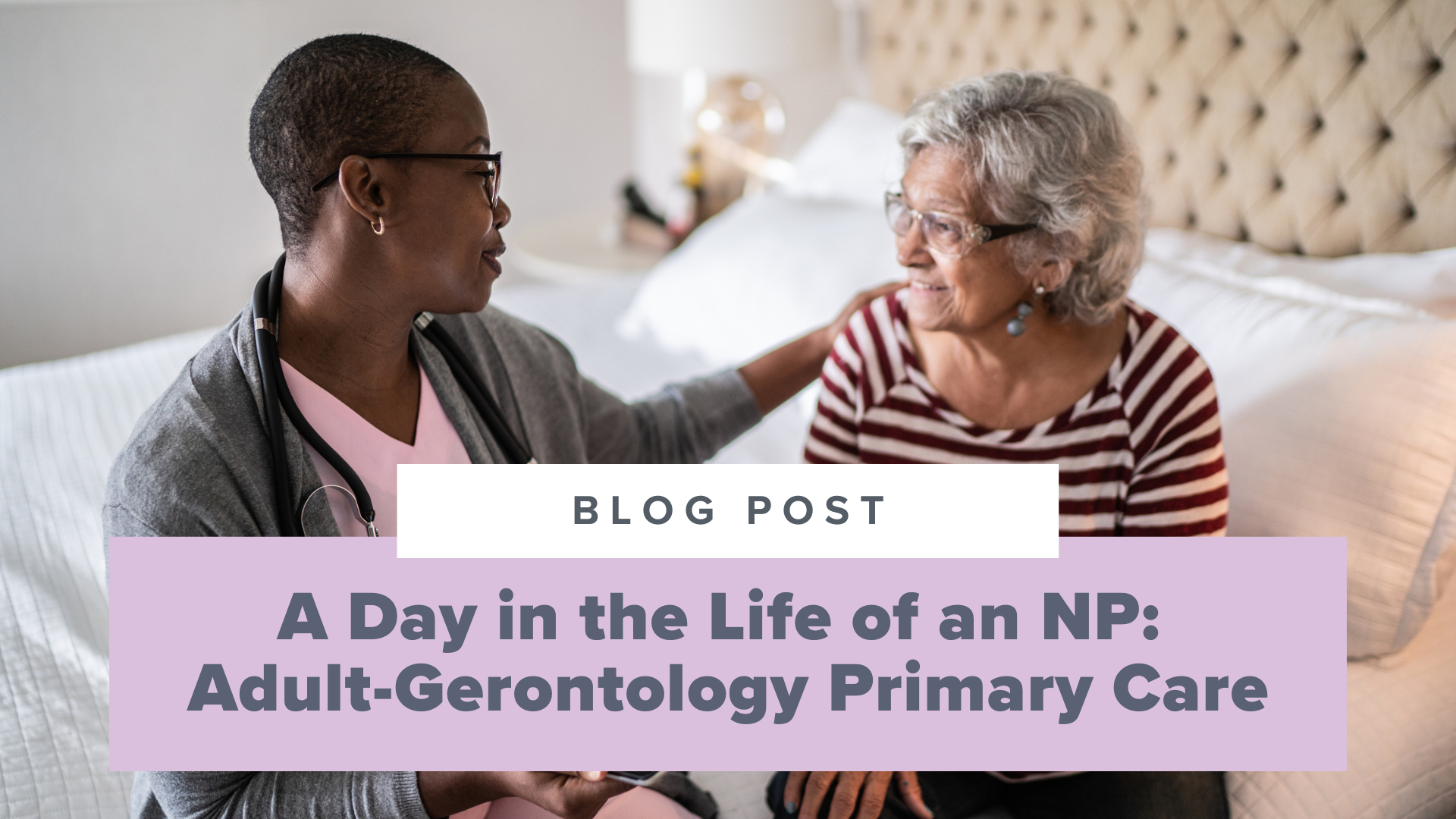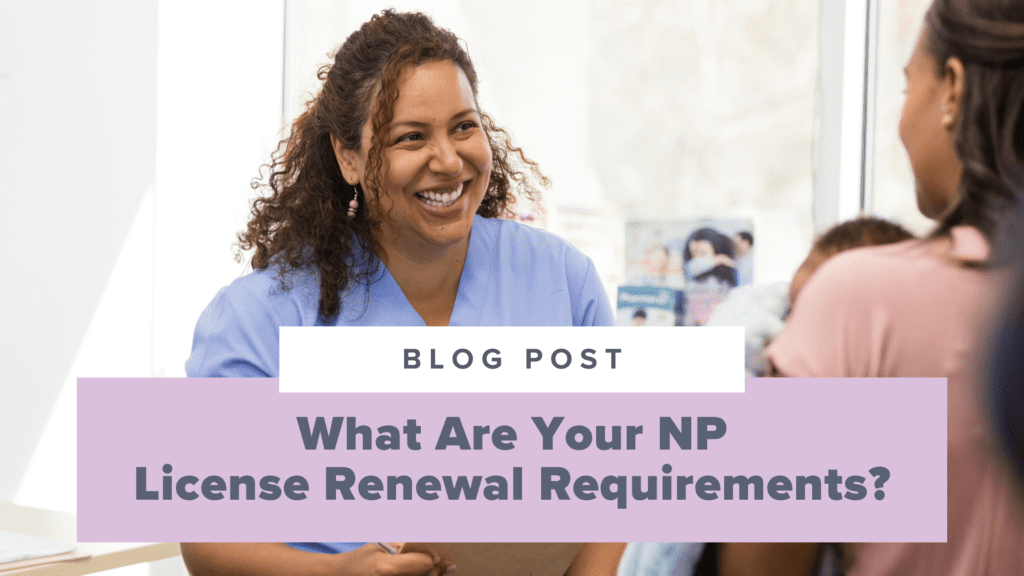A Day in the Life of a Nurse Practitioner: Adult-Gerontology Primary Care (AGPCNP)
- by
- Dec 27, 2023
- Articles

Have wondered how geriatric patients are able to see their medical provider, get medications refilled, complete labs or diagnostic studies, or go to specialty appointments? How do they schedule appointments and arrange transportation to and from the appointment? What about working with technology they might not be familiar with, or scheduling a medical appointment quickly if they have a fall, new respiratory symptoms, or notice a rash that they can’t explain?
Needless to say, medicine in our day and age isn’t easy to navigate. And it can be especially hard for elderly patients who have difficulty traveling, setting up and keeping track of appointments, or are medically fragile and need frequent hands-on care. That’s why I chose to become a nurse practitioner (NP) who works with geriatric patients in the community—so I can help elderly patients in a way that gives them the best possible care in the most convenient manner possible!
For me, becoming an adult-gerontology primary care NP has been an incredibly rewarding experience. Maybe you’re wondering if it’s the right career for you, but you just aren’t sure. Let’s take a look at this career path, so you can get a sense of what it’s like to be an adult-gerontology primary care NP.
What is an Adult-Gerontology Primary Care Nurse Practitioner (AGPCNP)?
Nurse practitioners have made great strides in recent years and they can now practice in a variety of areas. Some specialize in mental health, women’s health or midwifery, pediatrics or neonatal care, orthopedics, cardiology, surgery, hospice, and even holistic medicine. There are many ways for us to realize our passions and make a difference in our patients’ lives.
For those who have a desire to work with adults (ages 18+), there are two areas we can specialize in: adult geriatric primary care (AGPC) and adult geriatric acute care (AGAC).
Primary Care NP
Primary care nurse practitioners find themselves working in a variety of settings such as private practices, long-term care facilities, hospital-based clinics, group practices, and even out in the community. Primary care providers can order tests, make diagnoses, prescribe treatments, and focus on maintaining a patient’s health throughout their life.
Acute Care NP
Acute care nurse practitioners primarily work in settings such as emergency rooms, ICUs, surgical settings, specialty clinics, urgent care facilities, and hospitals. Acute care NPs care for patients with emergent conditions and exacerbated chronic illnesses.
My Path to Becoming an AGPCNP
When I started my nursing career, I never imagined where I would end up. I worked in doctor’s offices, hospitals, and in community and home settings, with adults and children of all ages and in various degrees of health.
I finally reached a point in my career where I was comfortable and felt that I had a good handle on my day-to-day life, but, true to form, I was anxious for more. I wanted more growth, more challenges, and more ways to help my patients. So, I decided to go back to school and pursue my NP license.
During my clinicals in NP school, I realized that I missed spending time with my patients and getting to know them as more than a medical record. While I enjoyed the fast pace of a medical office, I wanted to have a better relationship with my patients, one in which they felt they could reach out to me and trust me to guide them on their health journey.
I found a gerontology primary care company that would allow me to develop more of a relationship with my patients and I was hooked. Now I can see them where they live, understand not only their medical conditions but their lives, and how both impact each other. I’m more available to them and can make a greater contribution to their health and quality of life.
A Day in the Life of an AGPCNP: Community-Based Practice
One wonderful thing about my job is that no two days are the same. There’s so much variety on any given day that it keeps me on my toes and always interested and learning.
Starting the Day
Every morning I start by checking my email so I can see if any of my patients have been to the hospital overnight or if my on-call team has any messages from them. Once that’s done, I plan my day and head out into the community.
Currently, I have a caseload of 110 to 120 patients, which is pretty small compared to other providers in my profession, but this makes me more available to my patients and the facilities they live in. My patients are in senior living, assisted living facilities, adult family homes, or even their own private homes.
Checking In with Patients
On a given day, I’ll go to one or two locations and see between five and eight patients in total. When I get into a facility, I check in with the nurse and the med techs to see if there’s anything they need me to do such as writing prescriptions, ordering therapy services, checking on a patient they’re concerned about, or ordering lab tests.
One of the best things about my job is that many services can be brought to my patients, so they don’t have to leave their facilities. Labs can be drawn and mobile imaging services such as X-rays, ultrasounds, or EKGs can be done in place. There are even services such as podiatry, psych, and dental that can be brought into the facility so that patients don’t need to worry about setting up an appointment or transportation.
Either myself or my nurse will check in with each of our patients every month. We discuss their health concerns, check vital signs, and do a physical exam. We also discuss labs or diagnostics that may be due, referrals they need, or any changes to their medications that might benefit them.
We also check in with a patient’s family, powers of attorney, or responsible party each time we see them. Some of our patient’s family members live out of state or have guardianships. Contacting them after each visit puts their mind at ease because they know someone is checking in on their loved one and keeping them up to date on their condition.
Chart Time
After seeing each patient, it’s time to chart. Admittedly, this is the task that takes the most amount of time. Working in the community means that we’re responsible for referring to all outside services and ensuring those services are complete. This can take quite some time, but it’s the part of the job that makes it easier for my patients to receive the medical services they need inside their own homes.
Thankfully, I have several resources at my disposal including wonderful nurses and administrative assistants. As a team, we can coordinate lab draws, diagnostic imaging, specialty referrals, arrange medical transportation to and from medical visits, and even assist patients in ordering medical supplies such as wheelchairs, walkers, incontinence supplies, etc.
Ending the Day
Typically, the last half of my day is spent managing any issues that pop up. All the facilities have my phone number and can reach me if they have any concerns about my patients.
This means patients don’t have to wait a week for an answer regarding a medical question or a prescription refill. The focus of my practice is availability so my patients know they have someone in their corner working to ensure their healthcare journey is as easy and efficient as possible.
Why Consider Becoming an Adult-Gerontology NP?
As I said earlier, when I started my nursing career, I never imagined this was where I would end up, but I couldn’t be happier.
My job within the community is one of the most rewarding I have ever had. Hearing my patients say they are so happy to have a medical provider who can come to them, who can answer medical questions the same day, or who can provide services without them having to leave their facility makes my heart sing.
This job isn’t easy, and there are many hurdles that we are overcoming while bringing medicine back to the community, but the unimaginable growth we’re seeing in this area of medicine and the benefits that it has for our patients makes every hurdle worth it.
Hopefully, this is a path that other nurse practitioners (maybe even you) consider when they decide where to focus their efforts in the future. Good luck on your journey!
Further Reading
Looking for more information about becoming an NP? Check out these other posts on the SMNP Reviews blog!
Search the Blog
Join our Facebook Group!
Get FREE support and encouragement from thousands of NP students and our NP Support team.
Learn More3 Study Hacks to Conquer Your NP Exam!
Download these tips that have helped thousands of students pass their NP board exams.
Download NowInstitutional Partnerships
Are you a faculty member and would like to bring Sarah Michelle’s resources to your school? Email us at nursinggroups@blueprintprep.com for special institutional pricing or click on the link below to learn more.
Learn MoreGroup Discounts
Are you a student and have 10 or more classmates interested in purchasing Sarah Michelle’s courses? Email us at nursinggroups@blueprintprep.com for special pricing.



